Pallavi Baljekar
Building Machine Translation Systems for the Next Thousand Languages
May 16, 2022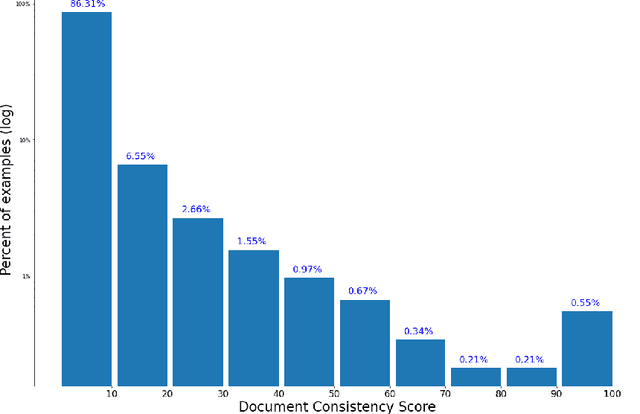


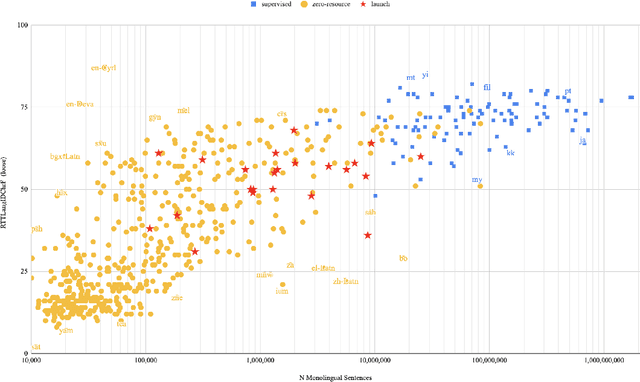
Abstract:In this paper we share findings from our effort to build practical machine translation (MT) systems capable of translating across over one thousand languages. We describe results in three research domains: (i) Building clean, web-mined datasets for 1500+ languages by leveraging semi-supervised pre-training for language identification and developing data-driven filtering techniques; (ii) Developing practical MT models for under-served languages by leveraging massively multilingual models trained with supervised parallel data for over 100 high-resource languages and monolingual datasets for an additional 1000+ languages; and (iii) Studying the limitations of evaluation metrics for these languages and conducting qualitative analysis of the outputs from our MT models, highlighting several frequent error modes of these types of models. We hope that our work provides useful insights to practitioners working towards building MT systems for currently understudied languages, and highlights research directions that can complement the weaknesses of massively multilingual models in data-sparse settings.
Quality at a Glance: An Audit of Web-Crawled Multilingual Datasets
Mar 22, 2021
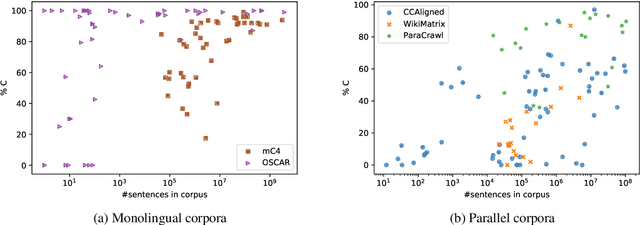
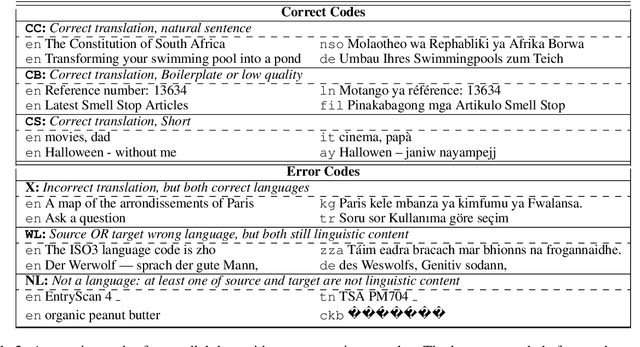
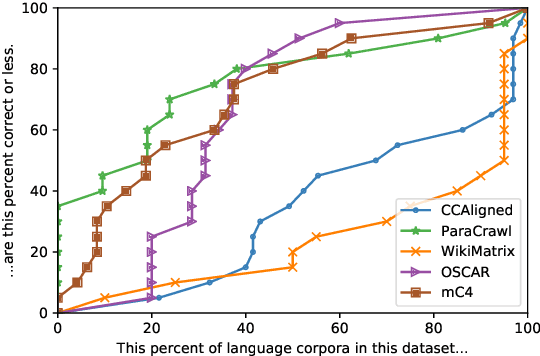
Abstract:With the success of large-scale pre-training and multilingual modeling in Natural Language Processing (NLP), recent years have seen a proliferation of large, web-mined text datasets covering hundreds of languages. However, to date there has been no systematic analysis of the quality of these publicly available datasets, or whether the datasets actually contain content in the languages they claim to represent. In this work, we manually audit the quality of 205 language-specific corpora released with five major public datasets (CCAligned, ParaCrawl, WikiMatrix, OSCAR, mC4), and audit the correctness of language codes in a sixth (JW300). We find that lower-resource corpora have systematic issues: at least 15 corpora are completely erroneous, and a significant fraction contains less than 50% sentences of acceptable quality. Similarly, we find 82 corpora that are mislabeled or use nonstandard/ambiguous language codes. We demonstrate that these issues are easy to detect even for non-speakers of the languages in question, and supplement the human judgements with automatic analyses. Inspired by our analysis, we recommend techniques to evaluate and improve multilingual corpora and discuss the risks that come with low-quality data releases.
Re-Translation Strategies For Long Form, Simultaneous, Spoken Language Translation
Dec 06, 2019
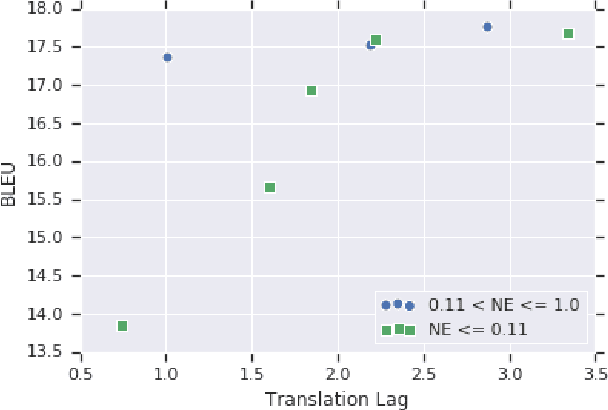
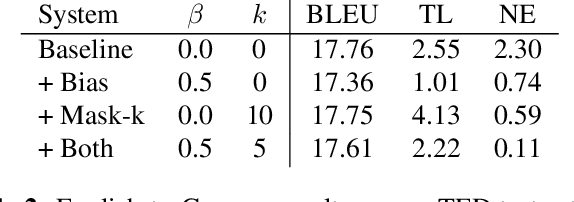
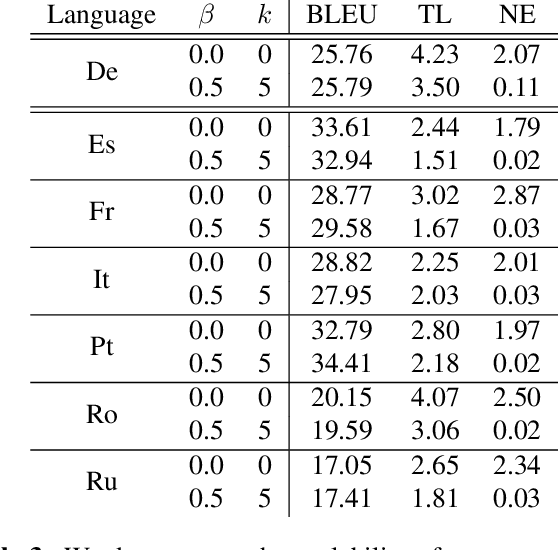
Abstract:We investigate the problem of simultaneous machine translation of long-form speech content. We target a continuous speech-to-text scenario, generating translated captions for a live audio feed, such as a lecture or play-by-play commentary. As this scenario allows for revisions to our incremental translations, we adopt a re-translation approach to simultaneous translation, where the source is repeatedly translated from scratch as it grows. This approach naturally exhibits very low latency and high final quality, but at the cost of incremental instability as the output is continuously refined. We experiment with a pipeline of industry-grade speech recognition and translation tools, augmented with simple inference heuristics to improve stability. We use TED Talks as a source of multilingual test data, developing our techniques on English-to-German spoken language translation. Our minimalist approach to simultaneous translation allows us to easily scale our final evaluation to six more target languages, dramatically improving incremental stability for all of them.
 Add to Chrome
Add to Chrome Add to Firefox
Add to Firefox Add to Edge
Add to Edge